There are plenty of online resources about direct view LED video walls. Most of these come from the manufacturers of the products themselves, making them a little biased. Today's goal is to answer "What is a direct view LED display?" and "Do we need it?" - from an impartial audio visual engineer's perspective.
From this article, you will get:
- A high-level overview of direct view LED technology
- Typical applications
- A list of questions that you should ask before purchasing
If you've purchased a TV in the past ten years, you know that quality is going up, and prices are going down. As the technology improves, displays are getting larger and brighter and are coming with higher contrast ratios.
We have gone from 36" CRTs to 70" LCDs in our homes. Today's displays are astonishing compared to what was available in years past. These trends created standards and demands that caused a shift in the commercial space.
Think of it like this.
If you're used to a bright 70" display in your living room, an old 55" display is going to look out of place in a 15-person conference room.
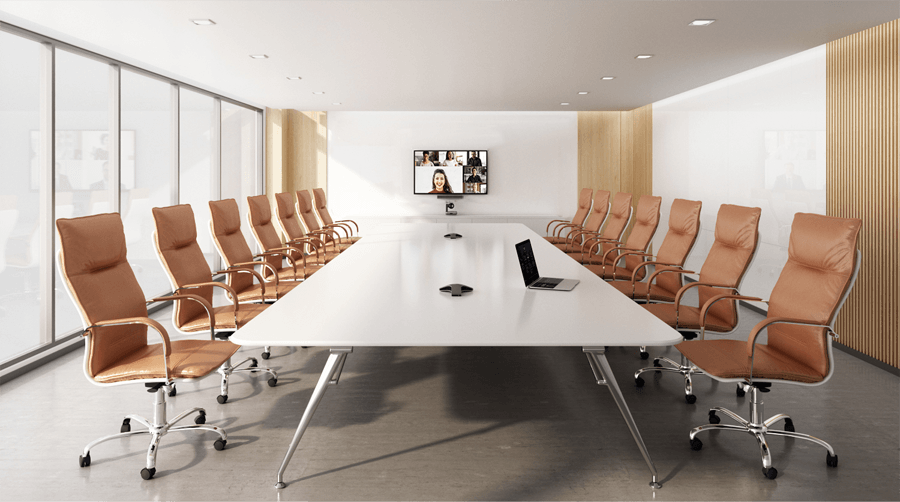
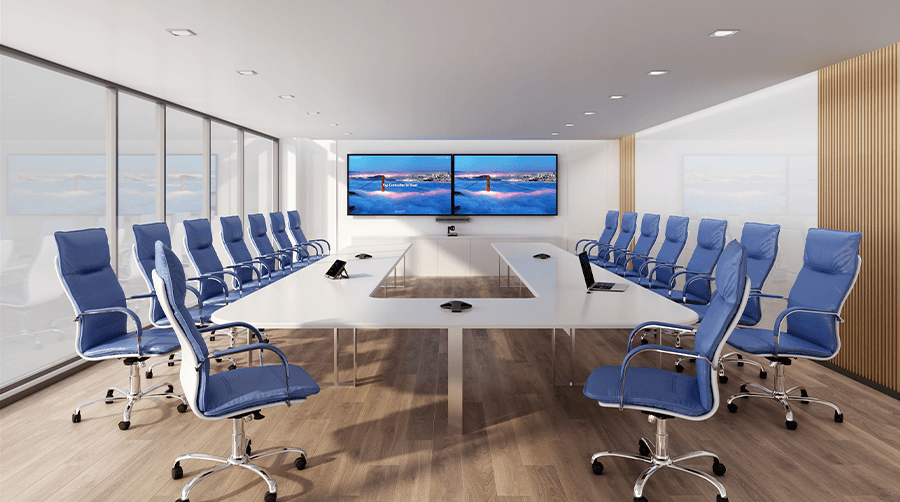
Display size makes a huge difference
The first round of displays in conference spaces went up to 70". The latest round tops out around 98". These displays look great and have become affordable for this type of application.
But what if you want something larger? Or something that's a custom size or shape?
That's where Direct View LED walls come in.
What are direct view LED displays?
A direct view LED is a display of light-emitting diodes (LEDs) mounted on a panel. Each LED is a tiny bulb that emits colored light.
Direct view LED video walls consist of several displays working together to seamlessly display content like a single screen.
The video walls have several components:
- The digital displays
- Mounting hardware
- Controller
- Video Source
Direct view LED Video walls have several distinct differences from traditional displays and tiled array video walls (2x2, 3x2, etc.).
Technology
Direct view LED display technology is a cutting-edge solution that offers stunning visual experiences in various settings. It utilizes an array of microscopic light-emitting diodes to create a vibrant and seamless display.
The LED display provides exceptional brightness, contrast, and color accuracy, delivering vivid and lifelike imagery. This technology excels in large-scale applications, such as stadiums, arenas, concert halls, and outdoor advertising, as it can achieve high resolutions with impressive pixel pitch and is visible from long viewing distances.
With its flexibility and scalability, direct view LED technology enables the creation of immersive displays of virtually any size and shape. Its energy-efficient design, durability, and low maintenance requirements make it a cost-effective long-term solution for captivating visual installations.
Sizing
Video walls are purchased and configured by linking smaller panels of LEDs together. Since the panels have no bezels, they can be tiled together for a seamless look at custom sizes or aspect ratios. They have different pixel pitches to choose from, so they can scale to any size. If bigger is your goal, direct view LED is a great option.
Brightness
LEDs are BRIGHT! The average flat panel display in your home or conference room will be 300 to 700 nits in brightness. Direct view LED products can range from 4000 to 10000 nits. The bright and crisp displays make them ideal for high ambient light environments, like building entrances and feature spaces.
Life Expectancy
The life LED is much longer than your average display. Average consumer displays can range from 10,000-20,000 hours. Commercial displays can stretch out to about 50,000 hours. Many direct view LEDs have an 80,000-hour life expectancy.
The lifetime of these displays is critical as the walls are typically custom sized. This makes replacing a single panel difficult, so you want a product that will last for years.
Energy Efficient
Depending on the content and brightness settings, direct view LEDs can be up to 75% more energy-efficient than LCD panels. This is good for the planet and your wallet.
Direct View LED Video Wall Applications
Direct view LED displays can be used anywhere due to their scalability, customization, and brightness. A more relevant question is when should you use them?
Outdoor Spaces
Direct view LEDs are available with an IP rating for outdoor use. Their incredibly bright displays make the content easy to see, even in direct sunlight.
Sports Arenas
Direct view LED video walls can scale to 100 feet (or more!), making them excellent for arena settings
.
Theaters, Performance Centers & Houses of Worship
Direct view LEDs as backdrops will create stunning displays that even people in the back can see and engage with.
Large Indoor Spaces
Office lobbies, airports, malls, and convention centers can use direct view LED video walls to create stunning visuals that entertain and inform.
Questions to Ask
What does LED quality depend on?
LED display pixel pitch refers to the distance between the center of two adjacent pixels on an LED screen. It is measured in millimeters and determines the density of pixels on the display with an integrated matrix device for an even better video signal. Depending on the type, it may have a surface mount diode (SMD pixels) and SMD technology. Using a printed circuit board makes LED viable for many functions, not just as a video wall.
A smaller pixel pitch and fine pitch LED indicates a higher pixel density, resulting in a sharper and more detailed image with greater visible light, which makes it ideal for digital signage. With more detail and fine pitch, the video appears on one seamless display with no visible seams.
The diodes in an LED display are the individual light-emitting components that make up each pixel. These diodes emit light when an electric current passes through them. In an LED display, each diode represents a single pixel and can be controlled independently to create different colors and brightness. The arrangement of these diodes forms the display's pixel matrix, with each diode contributing to the overall image displayed on the screen.
The quality and performance of an LED display depend on factors such as the size and consistency of the diodes used. Higher-quality diodes generally offer better color reproduction and longevity. The arrangement of diodes and their integration within the display structure is crucial in achieving optimal image and uniformity across the entire screen.
What’s the distance to the closest viewer?
Direct view LEDs have a specification known as pixel pitch. The larger the pitch, the farther apart the LEDs in the panels are. The smaller the pitch, the closer they are. This will determine how close a viewer can be and see a seamless image without the space between the LEDs. Pixel pitch has a considerable effect on the price of the wall, so you need to know this before shopping around.
What size do you want the display to be?
Direct view LED displays are a good option if you want something 110" or larger. If you need to do a feature wall with an unconventional shape, size, or aspect ratio, then direct view LED displays can accommodate those demands.
Are LED screens a good investment?
LED technology provides an extended lifespan, reducing maintenance and replacement expenses. Their solid-state nature enhances reliability and minimizes the risk of downtime and repair costs. LED walls offer customization and scalability options for things like dvled displays, eliminating the need for significant structural modifications and providing cost savings in installation and future upgrades.
The display's high visual impact with a clearer image attracts attention and potential revenue. An LED video wall provides long-term cost savings through energy efficiency and superior optical performance, making them a wise investment for businesses and organizations. This is why they have skyrocketed in popularity in the past few years.
LCD Video Wall versus LED Solutions - which is better?
When comparing LCD (Liquid Crystal Display) and LED (Light-Emitting Diode) technologies, it is crucial to understand their differences and consider their specific applications.
LCDs use a backlighting system and liquid crystal cells to produce images. On the other hand, LED displays utilize an array of light-emitting diodes as individual pixels to generate light and color, creating an impressive fine pixel pitch for optimal viewing.
In terms of image quality, an LED wall generally offers higher contrast ratios, deeper blacks, and better color accuracy due to its pixel control to provide more immersive experiences. They also offer wider viewing angles and better performance in high ambient light conditions with lovely full-color pixel and brightness levels.
LEDs are more energy-efficient and eco-friendly, consuming less power compared to LCDs. However, LCDs are typically more affordable and readily available in various sizes.
Ultimately LEDs win in almost every respect besides cost. But you may break even in the long run due to their longer lifespan.
What’s a baseline budget for your project?
As the technology improves and demand increases, direct view LEDs continue to decrease in price, and the total cost becomes more affordable. However, they still aren't the "cheap" option. Right now, they can be used in smaller spaces like conference rooms. Still, price vs. value can make the traditional flat panel displays a more cost-effective display option. This is why the application is so important to consider.
(Related: 7.5 Tips for Purchasing the Best AV Technology)
Direct view LED video walls are an exciting technology leading the industry in user experience. They make great centerpieces in high-traffic areas, have fantastic brightness and contrast, and can get as big as the checkbook will allow.
Interested in pricing out your next video wall projects? Get a rough estimate with our Technology Project Budget Calculator.
Editor's Note: This post was originally published in January 2011 and has been updated for freshness, accuracy, and comprehensiveness.
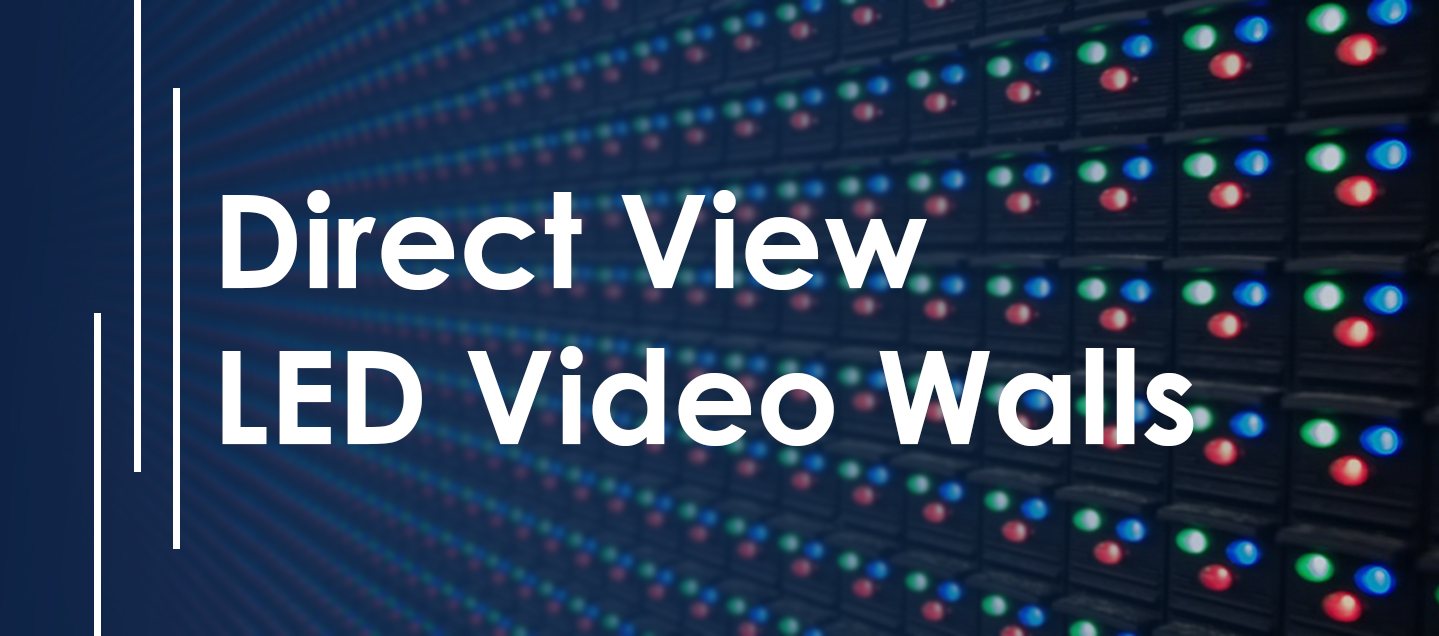

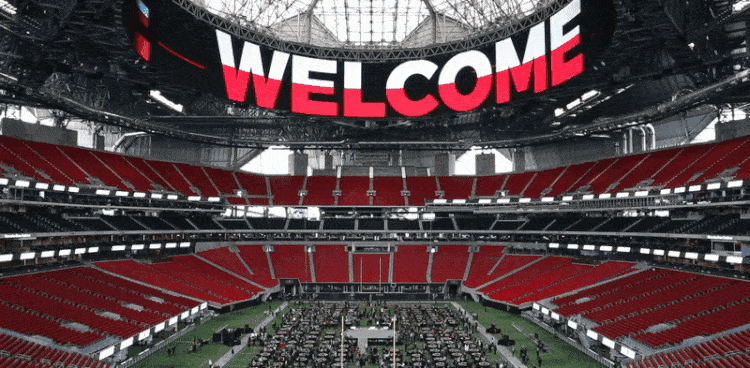
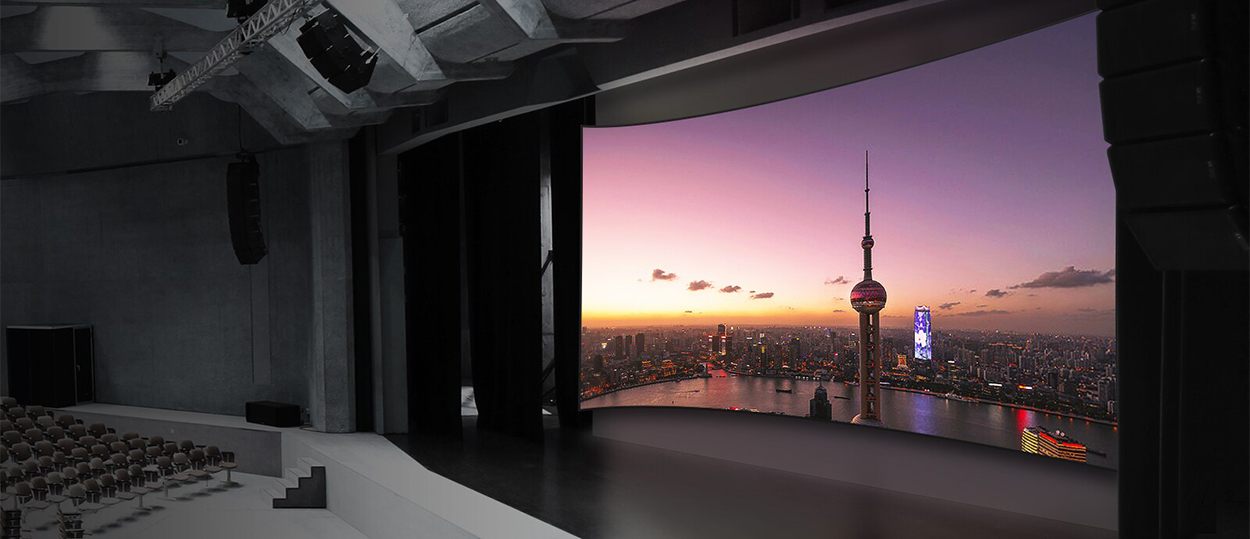
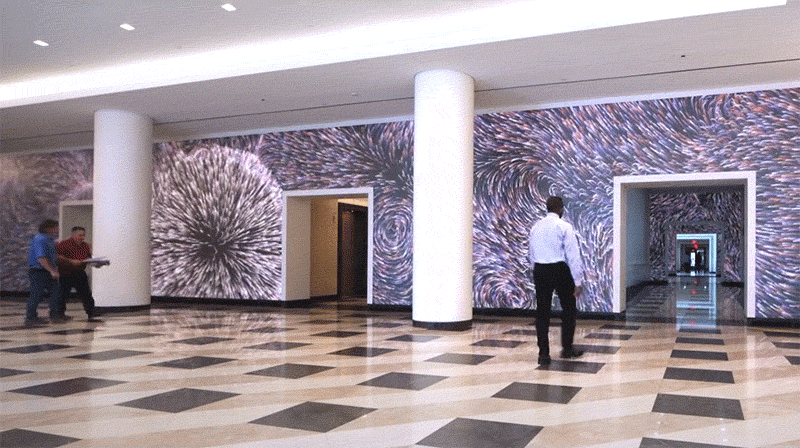


Leave a Comment